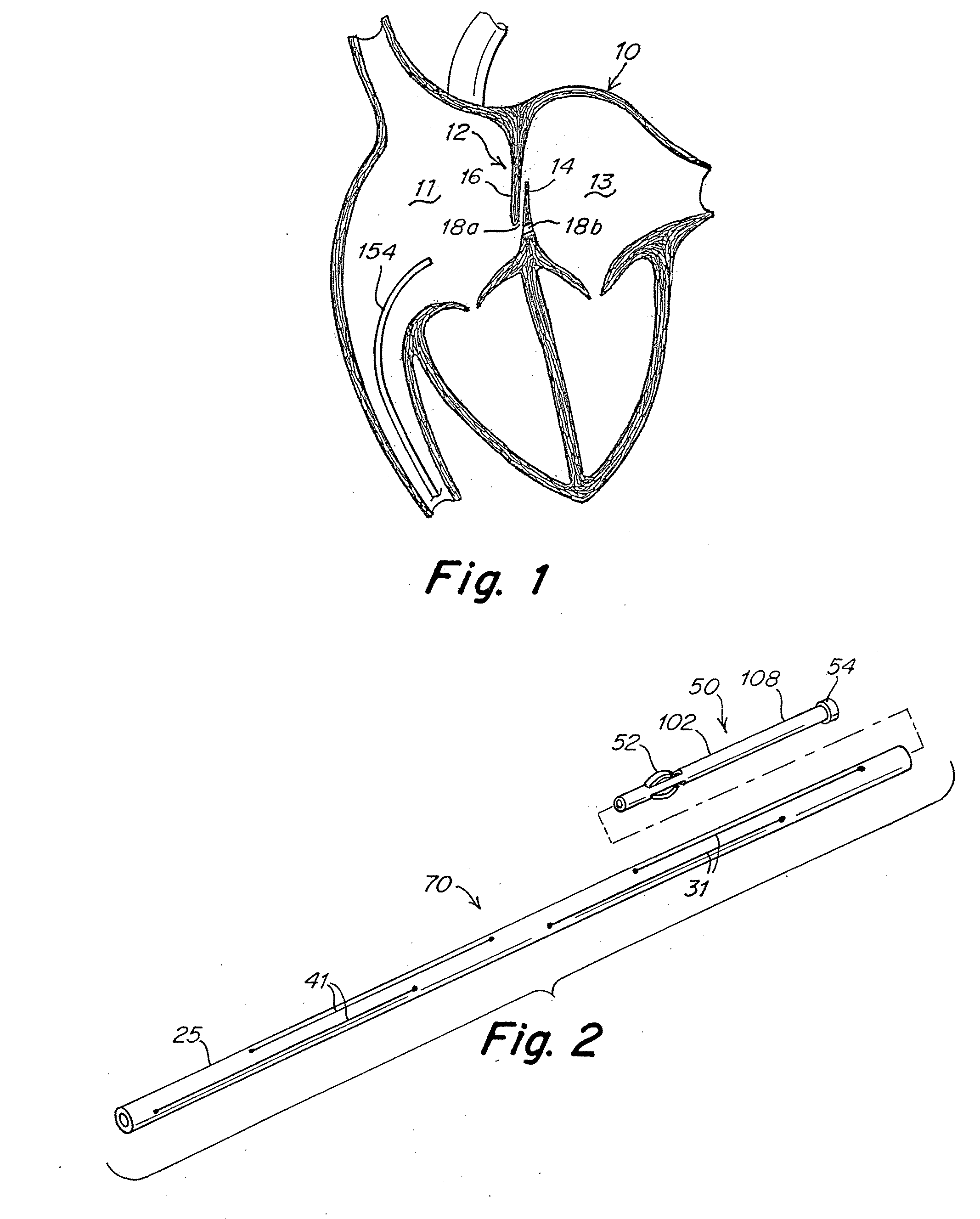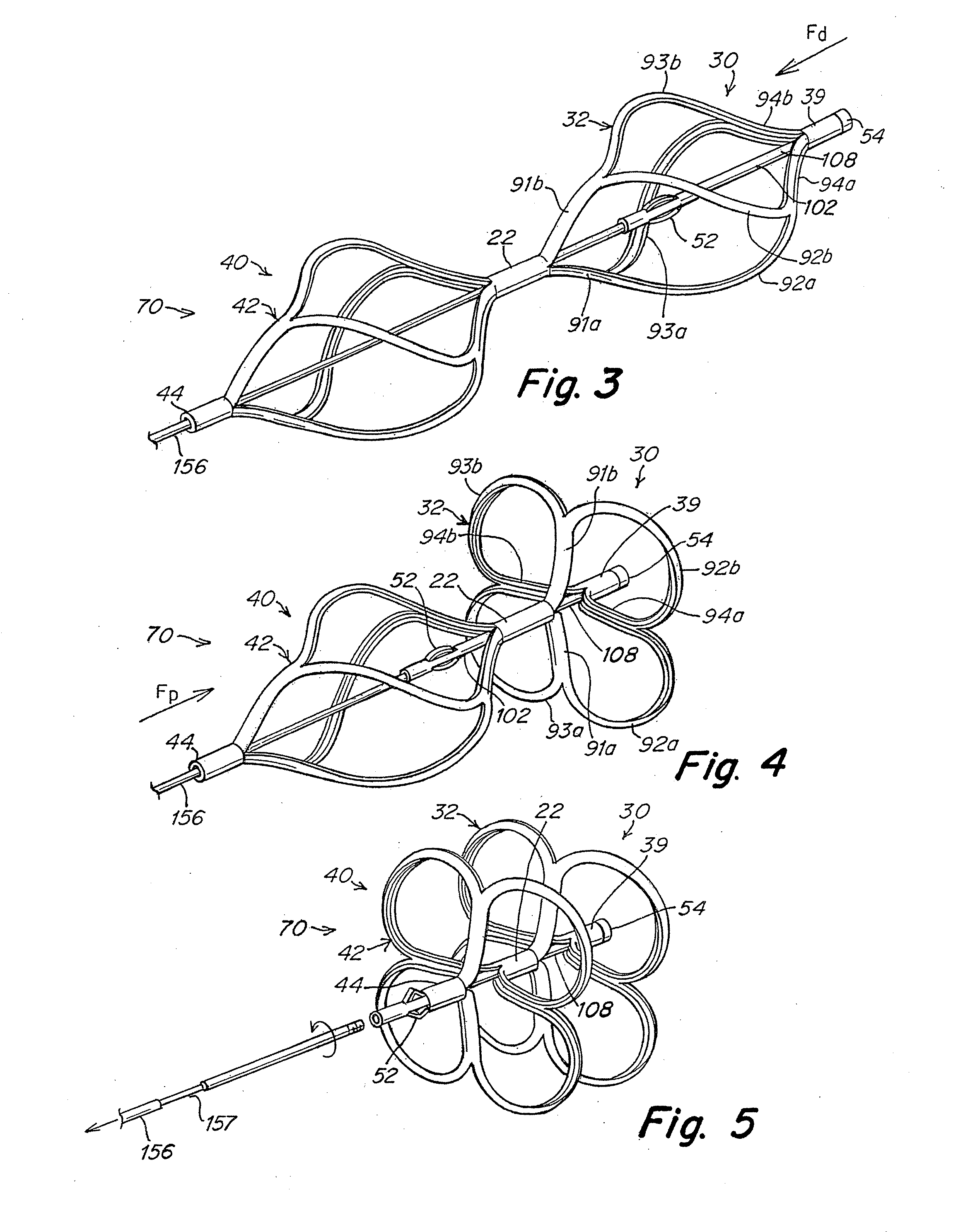Catch members for occluder devices
a technology of occlusion device and catch member, which is applied in the field of occlusion device, can solve the problems of recurrent cerebrovascular events, adverse side effects, and umbrella devices and the like designed for asds that are not optimally suited for use as pfo closure devices, and achieve the effect of preventing or reducing the compressibility of the catch member
- Summary
- Abstract
- Description
- Claims
- Application Information
AI Technical Summary
Benefits of technology
Problems solved by technology
Method used
Image
Examples
Embodiment Construction
[0064] Aspects of the present invention provide devices, delivery / retrieval systems and techniques for delivering such devices intended to occlude an aperture within body tissue. In particular, and as described in detail below, the described occluder may be used for closing an ASD, VSD or PFO in the atrial septum of a heart. Although the embodiments are described with reference to an ASD, VSD or PFO, one skilled in the art will recognize that the device and methods of the present invention may be used to treat other anatomical conditions. As such, the invention should not be considered limited in applicability to any particular anatomical condition. In addition, the systems and methods for delivery and retrieval, and for catching a device in a deployed state, that are aspects of the present invention may also be used in connection with other types of devices besides an occluder, in particular, devices having tubular profiles.
[0065]FIG. 1 illustrates a human heart 10, having a right...
PUM
 Login to View More
Login to View More Abstract
Description
Claims
Application Information
 Login to View More
Login to View More - R&D
- Intellectual Property
- Life Sciences
- Materials
- Tech Scout
- Unparalleled Data Quality
- Higher Quality Content
- 60% Fewer Hallucinations
Browse by: Latest US Patents, China's latest patents, Technical Efficacy Thesaurus, Application Domain, Technology Topic, Popular Technical Reports.
© 2025 PatSnap. All rights reserved.Legal|Privacy policy|Modern Slavery Act Transparency Statement|Sitemap|About US| Contact US: help@patsnap.com



